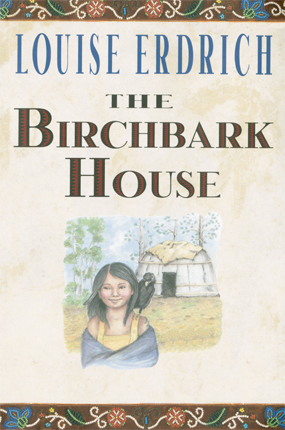Full Text Reviews: School Library Journal - 05/01/1999 Gr 4-6-In her first novel for young readers, Erdrich has written and illustrated an evocative work about a young Ojibwa girl who lives on an island in Lake Superior in 1847. Although white settlers continue to encroach on Ojibwa land, Omakayas and her family continue to live as her people have lived for centuries. Each summer they build a new birchbark house; each winter's end is celebrated at the maple-sugaring camp; and every day the child lovingly cares for her infant brother and puts up with Pinch, her annoying younger brother. The ebb and flow of these seasonal and familial rhythms is abruptly altered when an ailing white man enters their midst, unknowingly bringing smallpox to the settlement. Omakayas's family falls ill and the young girl, who surprisingly does not contract the disease, nurses them with her last ounce of strength. But she cannot save her beloved baby brother, who dies in her arms. Omakayas falls into a severe depression that only time, rest, and the intervention of a taciturn, eccentric neighbor can overcome. While this title will not appeal to fans of fast-paced action, readers who enjoy a variety of deftly drawn characters, relationships that ring true, and fascinating details about the daily life of the Ojibwa will be attracted to this endearing and irrepressible girl.-Peggy Morgan, The Library Network, Southgate, MI Copyright 1999 Cahners Business Information. - Copyright 1999 Publishers Weekly, Library Journal and/or School Library Journal used with permission. Bulletin for the Center... - 07/01/1999 Seven-year-old Omakayas (which means “Little Frog”) and her family follow the ways of their people, the Anishinabe, on the Island of the Golden-Breasted Woodpecker in Lake Superior. On the surface, the story of Omakayas is the story of any girl growing up: she envies her beautiful older sister, adores her father, is exasperated by her five-year-old brother, tries to get out of hated chores, and wonders about her future. The deeper story of the Anishinabe and their struggles to maintain their way of life is the richly textured infrastructure of this deceptively simple, lyrically written novel. Erdrich divides Omakayas’ story into four seasons, beginning with the summer of 1847 and the family’s move from their winter cottage to their summer birchbark house. As the seasons pass, Omakayas takes care of her adored baby brother, Neewo, and learns herb lore from her grandmother; she meets two bear cubs and their mother and discovers her calling as a healer; she cares for her family when smallpox breaks out, and she mourns the death of Neewo and others in their community. The details of everyday life are unobtrusively and skillfully woven into the text; the encroachment of white settlers into Indian land has clearly had impact but that encroachment is still held off by geographic isolation and deliberate choice. The relationships among the family members, between the family and their community, and between the community and the land come through clearly here in an emotionally involving style that will draw readers into the world and worldview of Omakayas and her family. The acknowledgments state that this novel, which provides a cultural counterpoint to the Little House titles, is the first in a series retracing Erdrich’s own family history. - Copyright 1999 The Board of Trustees of the University of Illinois. Loading...
|



